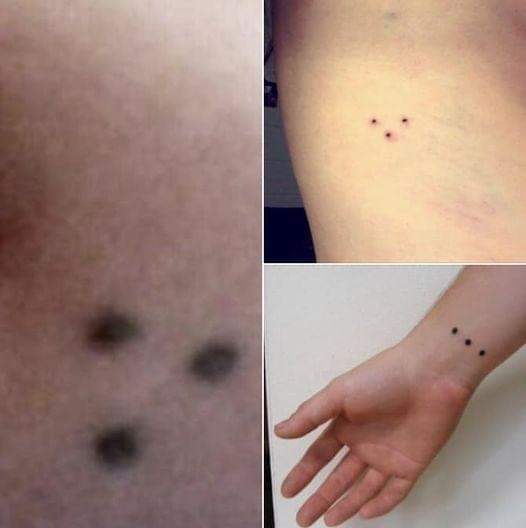Tattoos have long been an integral part of many cultures, often serving as a means of self-expression and individuality. While once considered taboo in certain communities, they are now widely embraced as a reflection of a person’s unique spirit and identity.
For many, tattoos carry profound significance, featuring symbols and designs that reflect personal passions, interests, or values. Words or phrases inked onto the skin often resonate deeply with the individual.
However, not all tattoos convey positive meanings. Some, like the notorious three-dot tattoo, are linked to criminal backgrounds. While this symbol is often misunderstood, it carries significant weight in certain contexts.
The three-dot tattoo can have various interpretations, frequently symbolizing secrecy, loyalty, or a lengthy prison sentence. Though it has roots in Buddhist symbolism, it’s most commonly associated with the Russian prison system, where each dot represents ten years of incarceration.
By understanding these symbols, one can gain deeper insight into the wearer’s history or beliefs.
The ‘three-dot tattoo’ often represents the phrase “mi vida loca,” which translates to “my crazy life” in Spanish. This tattoo is commonly associated with gang culture, particularly among Latino gangs, and symbolizes a commitment to a life of crime or a rebellious lifestyle.
Additionally, the three dots can also signify a person’s journey through life, with each dot representing different stages or experiences. In some contexts, it may also reflect a sense of unity among friends or a reminder of the struggles one has faced. The specific meaning can vary widely depending on the individual and their personal story.
In gang culture, several symbols are commonly used, each carrying its own meaning. Here are a few notable ones:
- Skulls: Often symbolize death or danger, representing a willingness to confront mortality or a life of violence.
- Crosses: Can signify faith or a connection to a gang’s identity, sometimes representing a fallen member.
- Stars: The five-pointed star is often associated with the Bloods, while the eight-pointed star can symbolize the Latin Kings.
- Clowns: The clown face is often used by the Insane Clown Posse fans (Juggalos) and can represent loyalty to the group.
- Numbers: Specific numbers can have significant meanings, like 13 for the Mexican Mafia or 14 for the Aryan Brotherhood.
- Gang initials or acronyms: Many gangs use their initials or specific acronyms to represent their identity and territory.
Each of these symbols can have different interpretations based on context and the specific gang culture they belong to.
In addition to the colors previously mentioned, here are a few more that are commonly used in gang culture:
- Purple: Sometimes used by gangs that are a mix of Bloods and Crips, symbolizing a blend of their identities.
- Yellow: Can represent certain gangs or signify caution and danger.
- Orange: Occasionally associated with gangs that are not as widely recognized, but can symbolize a distinct identity.
- Gray: Often represents neutrality or can signify a gang that operates in the shadows, away from mainstream conflicts.
- Pink: Sometimes used in a more playful or non-threatening context, but can also represent certain groups or affiliations.
Colors can carry different meanings depending on the context and the specific gang, so it’s essential to understand the local culture to grasp their significance fully.
